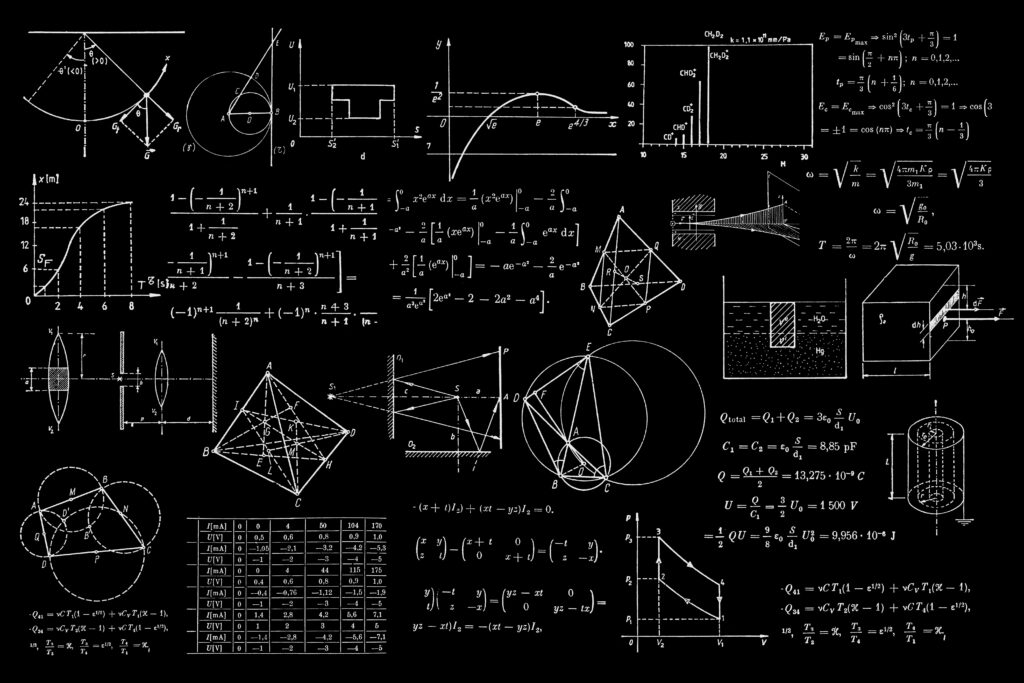x min read

“Math” Images – Unsplash.com
Introduction
Studying across all subjects is different. The harsh truth that nobody has every probably told you is that studying for math doesn’t use the same methods as studying for history. They’re almost completely different.
What you’ll also learn here today is that practice is not the best way for studying across all subjects. Instead, it may be one of the worst methods for some. So yeah, there’s a lot to go over.
Practice Isn’t Always Best
This might hurt, or you might even refuse to believe so, but the common myth that’s commonly mentioned all over the field of education is that practice is the ‘best’ form of studying. But, here’s the real truth: that’s not always the case.
In a lot of cases actually, practicing is so low leverage that you’re better off studying with another unheard of method for 30 minutes, than ‘practicing’ for 2 hours. It’s not always time-advantaged.
However…
Luckily, practice in a field of study (this being mathematics), is actually mandatory.
If you’re interested in learning more about the truth behind practice and why it might not always suit your form of learning, feel free to stay updated with our content. We’ll be posting that pretty soon.
What You’re Doing Wrong
If you’re studying hard but not seeing the results, it might be time to examine your approach. Many students fall into the trap of passive studying, where they read through their notes and watch their teachers solve problems without actively engaging with the material. Active participation is crucial. This means working through problems on your own, making mistakes, and learning to correct them.
Start Doing This
Think of each math problem as a puzzle designed to teach you a specific skill or concept; the more puzzles you solve, the more adept you become at recognizing patterns and solutions. Instead of just looking at the solution and nodding, challenge yourself to understand each step and its purpose. It’s not enough to know that a formula gives you the right answer; you should understand why it works and be able to apply it to a variety of problems that look different on the surface but have underlying similarities.
Another common issue is a reluctance to grapple with mistakes. Every error is a learning opportunity, but only if you take the time to explore it. When you get a problem wrong, don’t rush to the back of the book for the solution. Spend time diagnosing where you went off track. Was it a simple arithmetic slip? A misunderstanding of the concept? Or perhaps a misreading of the question? Whatever the case, identify the error and work through the problem again.
Why Bother
This process might be time-consuming, but it cements your learning and helps avoid future mistakes. Moreover, keep in mind that math builds upon itself, and if you’re shaky on the fundamentals, advancing will be tough. Revisit the basics regularly, and ensure your foundational knowledge is solid. It can be tempting to focus on advanced topics, but without a strong base, the entire structure of your knowledge could wobble.
Finally, studying in isolation can limit your perspective. Engaging with peers, teachers, and tutors can open up new ways of thinking about problems that you hadn’t considered. Discussing problems, teaching concepts to others, and asking questions exposes you to different methods and shortcuts. It’s not about getting the answer right every time—it’s about developing a mathematical mindset that approaches problems with curiosity and resilience.
Asking Questions
Many students believe that asking questions reveals weakness, but the opposite is true. Each question you ask is a step toward deeper understanding. When you combine these elements—active engagement with material, a meticulous approach to mistakes, a robust understanding of foundational concepts, and collaborative learning—the study of math transforms from a solo slog to an intellectually rich journey that you navigate with confidence and curiosity.

“Questions” Images – Unsplash.com
How To Actually Study For Math
Lay a Strong Foundation
Imagine building a house. If the foundation isn’t solid, anything you build on top of it will be shaky. The same goes for math. Begin with ensuring your basic math skills are strong. This doesn’t mean just being able to do the calculations; it means understanding the principles behind them. Why does division work the way it does? How are percentages equivalent to fractions? A solid grasp of the basics will make advanced concepts much easier to tackle.
Don’t be afraid to go back to the very basics. Even if you’re in a higher math class, there’s no shame in reviewing elementary or middle school math topics if you need to. It’s like going back to the root of a tree to ensure it can support the branches that reach towards the sky.
Practice: The Heart of Mastery
There’s an old saying: “Practice makes perfect,” and in math, this is especially true. But it’s not just about doing problem after problem mindlessly. It’s about mindful practice. Start with problems that you can handle, then gradually increase the difficulty level as your confidence grows. Every time you solve a problem, it’s like adding a new tool to your mathematical toolbox.
When practicing, try to explain the problem and solution out loud, as if teaching someone else. This not only helps in solidifying your own understanding but also reveals any gaps in your knowledge. And when you make mistakes, dig into them. What went wrong? Was it a simple calculation error or a fundamental misunderstanding? Learning from errors is one of the most powerful ways to improve.
The Study Environment
Where you study is almost as important as how you study. Find a quiet, comfortable place where you can spread out your textbooks and notes. Ensure it’s free from distractions like TV, social media, or even a cluttered table. Gather all the tools you’ll need—pencils, erasers, calculators, and graph paper—and have them within reach.
Establish a routine. Set aside specific times of the day for math study to create a rhythm. Your brain will get used to the idea that ‘this is the time we do math,’ making it easier to focus and understand the material.
Seek Out Resources and Support
Never study in isolation. There are endless resources out there to help you learn—from online tutorials to study apps to good old-fashioned textbooks. Use them. If there’s a concept you’re struggling with, find a YouTube video that explains it. Check out math games and apps that turn practice into a more interactive experience. Join study groups where you can learn with and from your peers.
Mastering Effective Practice
Effective practice in math is about much more than just repetition; it’s about mindful engagement with every type of problem you encounter. To truly master math, it’s important to understand that every concept, no matter how small, can be a gateway to a larger world of mathematical thinking. Effective practice begins with a strategy, one that requires you to be both systematic and flexible in your approach.
Step 1
The first step is to identify what you’re practicing for. Are you shoring up your basics, preparing for a test, or learning a new concept? Your goal will dictate your approach. For foundational skills, such as multiplication or basic algebra, drills can be effective. However, even with drills, the aim should be to understand patterns rather than just memorize answers. For example, when practicing multiplication, note how multiplying by 2 is the same as doubling, and how multiplying by 10 shifts the number leftward, adding a zero at the end in a base-10 system. These insights help you connect the dots between simple arithmetic and more complex algebraic concepts.
Step 2
When you’re tackling new or complex concepts, start by breaking them down. For instance, if you’re learning how to solve quadratic equations, begin by understanding what a quadratic equation is and how it’s structured. From there, move to the processes that make up solving it: factoring, using the quadratic formula, completing the square, and graphing. Work on problems that use these different methods, paying attention to why you would use one method over another. This not only helps you to understand the concept but also equips you with a toolkit of strategies for solving any quadratic equation you come across.
Step 3
Mix up the types of problems you work on. If you’ve been doing a series of similar equations, switch to a word problem that requires you to apply the same concept. This prevents the false sense of security that comes from pattern recognition and challenges you to apply what you’ve learned in different contexts. It’s the difference between being able to recite a poem you’ve memorized and being able to craft your own poem in the same style.
Reflecting & Taking Breaks
Another key aspect of effective practice is reflection. After working through problems, take a moment to reflect on what you’ve learned from them. What strategies worked? What didn’t? What could you do more efficiently? This is also a good time to consult your resources, like textbooks, teachers, or online platforms, to compare your approach with standard methods and understand any discrepancies.
Remember, too, that effective practice includes knowing when to take a break. Your brain processes and consolidates information during downtime, making breaks essential for long-term retention. Schedule them into your study sessions to avoid burnout and to keep your mind fresh and ready to tackle the next set of challenges.
After all, do you seriously expect your brain to keep on running for hours on end, without enduring mental fatigue (or what many consider nowadays as a “fried brain”)?
- If you’re searching for a solution to curing this mental fatigue, my #1 suggestion would be power naps. They will change your life once you start doing them, and will cost you little time at all.

“Break” Images – Unsplash.com
Key Takeaways
Don’t worry, we got you.
- Adopt active engagement strategies: solve problems, delve into the ‘why’ behind formulas, and practice explaining concepts out loud as if teaching someone else.
- Break down new and complex concepts into smaller parts, and use a variety of problems, including word problems, to apply these concepts in different contexts.
- Reflect on your practice sessions by analyzing what methods worked, where you made mistakes, and how you can improve efficiency.
- Incorporate regular breaks into your study routine to prevent burnout and enhance information retention.
- Utilize your strengths to build confidence and support areas of difficulty, creating connections between different areas of mathematics for a more comprehensive understanding.
Mini-Examples
- While studying fractions, instead of just memorizing procedures, you explain out loud why you flip the second fraction and multiply when dividing fractions. This cements the concept and helps you remember.
- When faced with quadratic equations, you start by factoring simpler ones and gradually work up to using the quadratic formula, mixing in real-world application problems to test your understanding.
- After a study session on geometry, you review which formulas for area and volume worked best for different shapes and consider why some problems were easier than others, which helps streamline your approach.
- Schedule a 10-minute break every hour during your study sessions to walk around or do something relaxing, ensuring you return to your problems with a fresh perspective.
- You’re good at visualizing geometric shapes, so when you move on to trigonometry, you draw right triangles to better understand sine, cosine, and tangent, using your spatial strengths to grasp new concepts.
Conclusion
Studying for math is awfully difficult for many. My hope with this post was to end that. Of course, math is a huge subject that spans many subjects, challenges, obstacles, problems – you get it.
Of course, we aren’t really the type to actually go in-depth into these subjects and explain them (as, trust me, you’re far better off watching videos online or paying for some online program than you are reading content online on how to solve math problems).
The main, biggest takeaway out of all of this is that practice is what’ll guide you to academic success in math. You can also use videos online, lectures, and whatever else you use to help you; but if you’re not going at it everyday, attempting to solve more and more problems regarding whatever topic you’re covering in class, you can’t expect to do well.
Practice. Practice. And keep on practicing.



